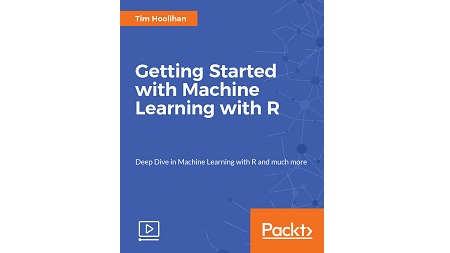
English | MP4 | AVC 1920×1080 | AAC 48KHz 2ch | 1h 20m | 332 MB
A fast-paced guide to getting started with the Machine Learning with R
Machine learning is a subfield of computer science that gives computers the ability to learn without being explicitly programmed. It explores the study and construction of algorithms that can learn from, and make predictions on, data. The R language is widely used among statisticians and data miners to develop statistical software and perform data analysis. Machine Learning is a growing field that focuses on teaching computers to do work that was traditionally reserved for humans; it is a cross-functional domain that uses concepts from statistics, math, software engineering, and more.
In this course you will start by organizing your data and then predicting it. Then you will work through various examples. The first example will demonstrate (using linear regression) predicting the murder arrest rate based on arrest data for a given State. Here you will explore R Studio and libraries, how to apply linear regression, how to score test sets, and plotting test results on a Cartesian plane. Then the next example will use logistic regression to predict for a classification problem on breast cancer: forecasting insurance types based on medical treatment. This example demonstrate labeling and scaling data, how cross-validation works, and how to apply Logistic regression. Finally you will move on the next example—automobile classification—where you will use the caret package in R to simplify some of these steps.
By the end of this course, you will have mastered preparing data and the tools involved: regression and classification. Additionally, you will have learned to make predictions on new observations.
What You Will Learn
- In this course you will learn how to:
- Organize and set up your data, and make predictions
- Apply a variety of tools: regression, and classification
- Label and scale data and how cross-validation works
- Make predictions on new observations
- Use the caret package to apply and score a model
Table of Contents
Linear Regression Predicting Arrests
The Course Overview
Your R Environment
Exploring the US Arrests Dataset
Creating Test and Train Datasets
Creating a Linear Regression Model
Scoring on the Test Set
Plotting the Test Results
Classification
EDA: mtcars
Working with Factors
Scaling Data
Creating a Classification Model
Advanced Formulas
Precision, Recall, and F-Score
Caret
Introduction to Caret
EDA and Preprocessing
Preparing Test and Train Datasets
Creating a Model
Cross Validation
F-Score
Resolve the captcha to access the links!